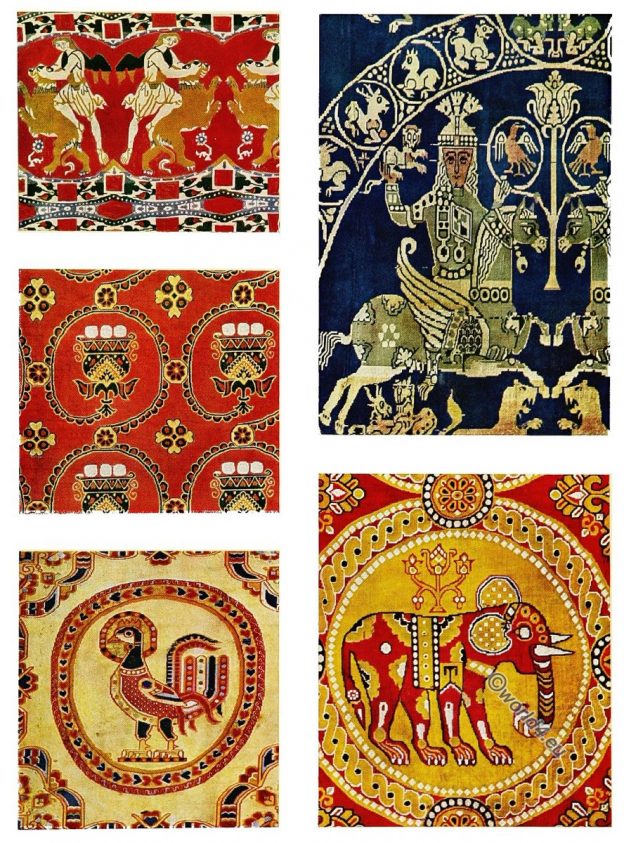Assyrian and Persian Art of Nineveh and Persepolis.
Tag: Ornaments
Egyptian Art. Jewelry. Amulets, statuettes of the gods, jewels, papyri.
Most of those perfect specimens of Egyptian jewelry which are so invaluable to those in ornamental work have been obtained from the abodes of the dead.
Egyptian Art. Decorative Paintings. The flowing ornaments.
Egyptian Art. Decorative Paintings.The Scarabaeus. The flowing ornaments from Thebes. Red, blue, and yellow were the principal colors employed.
Sheet of designs for textile fabrics of a persian designer.
Oriental art. Sheet of designs for textile fabrics, reproduced from the pattern-book of a persian designer.
Wall Papers, designed by Walter Crane, 1918.
Fig and Peacock. Golden Age. Wood Notes.
Italian embroidered silk hangings. The treasury of ornamental art. 16th c.
THIS engraving shows the upper and lower portions of a vertical panel, supposed to have originally formed a pilaster or border to a piece of tapestry.
Indian embroidered satin stuff for dresses. Treasury of ornamental art.
The treasury of ornamental art. Specimen embroidered satin. Manufactured at Kachchh (Cutch), Gujarat in India.
Japan shippō-yaki design. Cloisonné enamel.
Japan shippō-yaki design. Three segments of a circular border. Cloisonné enamel.
Antique Fabrics from Egypt. Coptic Silks. Silks from Alexandria.
Antique Fabrics. Red silk, patterned with figures of Samson and the Lion. Fabric with elephant pattern. Fabric with cock pattern, Persia.
Terra di Lavoro. Two woolen carpets. Italy 18th c.
Two woolen carpets of the “Terra di Lavoro”










